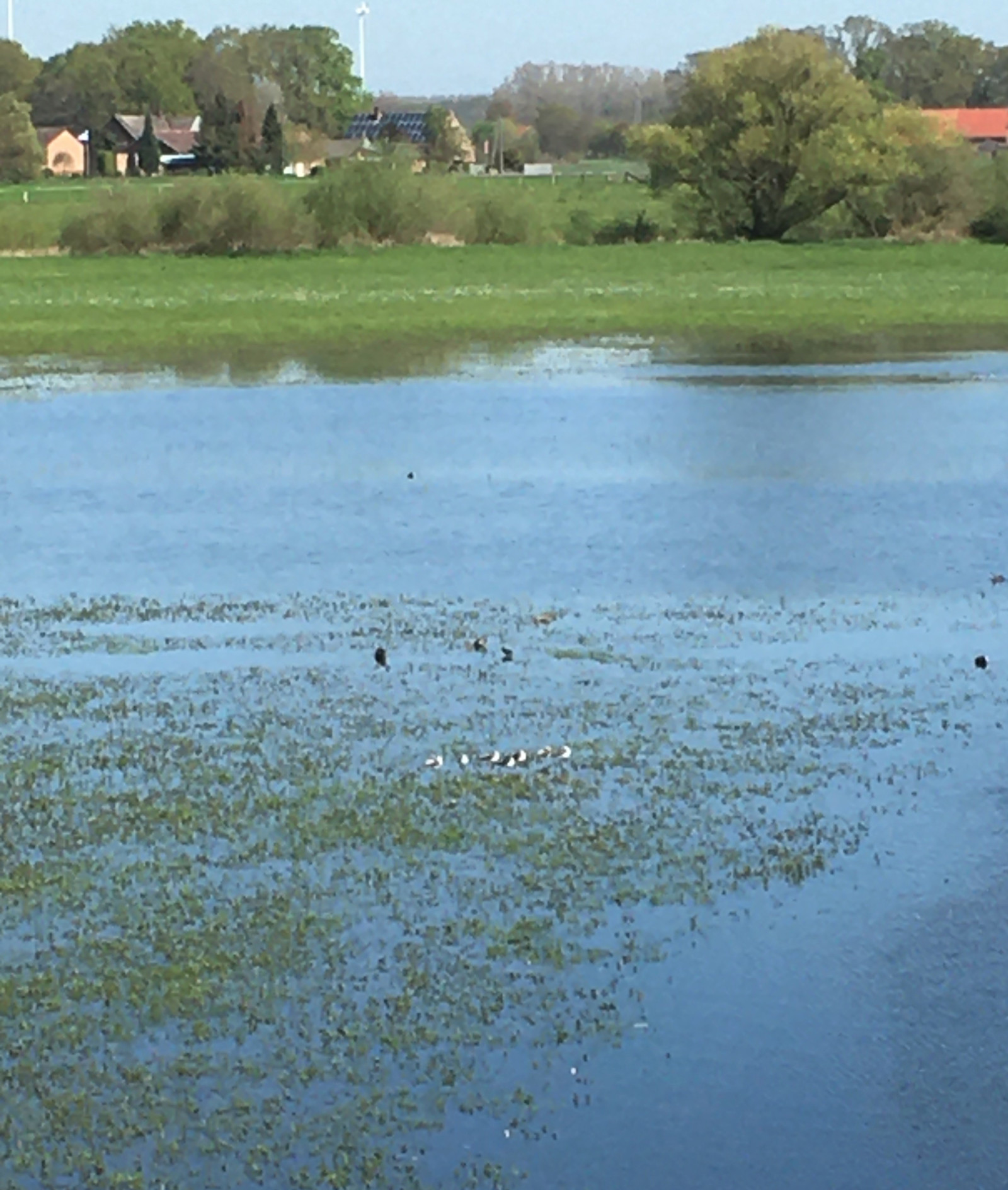Beschreibung
The bird hide of Disselmersch is located in the middle of the Lippe floodplain west of Lippborg. The vast grassland areas and bodies of water are completely overflowed during floods. When the water level drops, the still waters and damp depressions remain a magnet for numerous bird species. Flood channels run through the Lippe floodplain here and the embankment of the Lippe has been lifted in several places. In the bird hide you get very close to the birds! Among the birds you can encounter are Weißstorch, Bekassine, Kiebitz, Kiebitzregenpfeifer, Dunkler Wasserläufer, Großer Brachvogel and Austernfischer.
Details
Zugang
If you drive from the west on the B475 over the Lippe Bridge near Lippborg (Heintroper Strasse), you can see the floodplain meadows and many smaller ponds extending to the west. After the Lippe Bridge, the B475 turns left. If you instead turn right onto Büninghauser Str., after about 300m along an old railway line, you will find a small dirt road that turns right and ends at a small parking lot. From there, a short footpath leads up a hill to a bird hide. From the covered hide at a height of 5 meters, birds can be observed up close. The access road to the hut is accessible without stairs. Click on the P in the map for directions.


